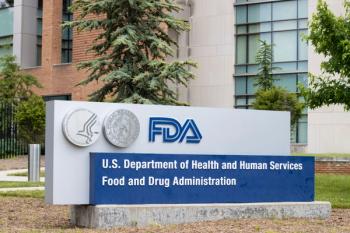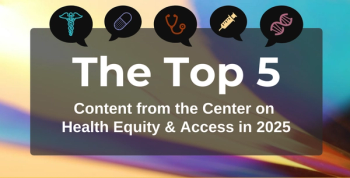
Expanding Broader Patient Access to CGTs
Key Takeaways
- The CGT market is projected to reach $80 billion by 2030, with over 50 products currently available.
- High costs and limited clinical data pose significant barriers to equitable access to CGTs.
Key trends and challenges are shaping the next era of advanced therapies, from FDA momentum to broader patient access.
At
Panelists included Fran Gregory, PharmD, MBA, vice president of emerging therapies, Cardinal Health; Anna Purdum, PharmD, MS, vice president and head of global market access, OrcaBio; and Rich Prest, MBA, senior principal, Blue Fin Group.
The CGT Pipeline and Advanced Therapies
Patient access to high-cost therapies remains one of the most pressing challenges in the rapidly evolving landscape of CGTs and other advanced therapies, explained Gregory. However, their costs range from hundreds of thousands to several million dollars per patient, posing significant barriers to equitable access. At the same time, the pipeline for advanced therapies is expanding quickly, with more than 50 products already on the market and projections of nearly $80 billion in sales by 2030. These therapies extend beyond oncology to include conditions in neurology, immunology, ophthalmology, and rare genetic diseases, many of which previously had no approved treatment.
As this pipeline matures, the industry is undergoing several key shifts to improve access, including the move from autologous to scalable allogeneic therapies, the expansion of treatment sites beyond academic centers into community settings, and the growing role of specialty pharmacies in navigating financial and logistical hurdles.
These changes reflect a new phase of sophistication in the field, where innovation must be matched by systemwide strategies to ensure that life-changing therapies reach the patients who need them most.
A recent study published in
“What is really important at this stage in the game is to demonstrate the value of these products to payers, to providers, [and] to patients, and make sure that we have really good, solid, health economic value stories and models that really show that these products are worth it,” Gregory told The American Journal of Managed Care® (AJMC®).
Challenges and Future Opportunities
In addition to high upfront costs, there are often limited clinical data available, as well as logistical and reimbursement complexities that can impede equitable access, explained Purdum.1 Many of these therapies are approved based on small phase 2 trials without comparators, increasing payer hesitancy. At the same time, the manufacturing process adds layers of complexity around chain of custody and treatment center requirements. In response, payers have evolved from single-case agreements to global case rates and value-based carve-outs, with some now requiring treatment at designated centers of excellence.
Furthermore, public payers like CMS have introduced models like the Cell and Gene Therapy Access Model, which ties reimbursement to outcomes, signaling a shift toward performance-based payments. Manufacturers are also getting ahead of uncertainty by using synthetic control arms, cost-offset modeling, and long-term safety registries to support the value proposition, explained Purdum.
Additionally, real-world evidence continues to play a growing role in demonstrating long-term efficacy and safety, helping to reduce uncertainty over time. These innovations in both evidence generation and reimbursement modeling are critical to sustaining access and demonstrating the value of these transformative but complex therapies, she said.
“Cost-effectiveness and budget impact models are not new either,” Purdum said. “We see those fairly straightforward, and often, manufacturers will come to market with their cost-effectiveness model and their budget impact model. I think with these therapies, because they're costly, there are often a lot of cost offsets, and also improvements in life, so much so that they have been able to show their demonstrated true cost-effectiveness.”
Key Components of CGT Commercialization
Commercializing CGTs also requires a comprehensive, multifaceted framework that addresses the unique complexities of these high-cost, high-value treatments, from the outset, supply chain logistics—particularly ultra-cold storage and the need for precise, error-free handling, explained Prest. At the same time, the patient journey must be account for personalized variations and early patient identification, especially given the small population sizes.
Additionally, reimbursement models remain a major challenge, requiring innovative approaches such as outcomes-based contracting or extended payment terms to balance financial risk. Treatment center accreditation, standard operating procedure development, and defining clear protocols for therapy receipt and administration are essential steps toward readiness, continued Prest. Furthermore, coordination across all stakeholders, including manufacturers, specialty distributors, pharmacies, treatment centers, and payers, is critical.
As the field scales from 50 to potentially 200 approved therapies and revenues jump 10-fold, building repeatable, scalable models are imperative.
“I think in many ways, one way to think about cellular gene is that it seems exotic and special now, but probably in 10 years, we're just going to think of it as another type of therapy,” said Prest. “We're going to learn how to do this, and we're going to we're going to solve all these complications, and it's just going to be another way to do business.”
References
1. Gregory F, Purdum A, Prest R. Cell, gene, and beyond: what’s working and where do we go next. Presented at: AXS25; April 29, 2025; Las Vegas, NV.
2. McNulty R. Uniform global standards, processes could accelerate CGT approvals, access. AJMC. March 13, 2025. Accessed April 30, 2025.
Newsletter
Stay ahead of policy, cost, and value—subscribe to AJMC for expert insights at the intersection of clinical care and health economics.








































